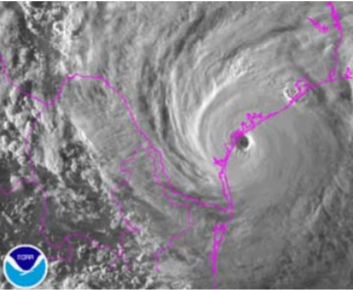6.4: Expected Value and Variance of a Discrete Probability Distribution Function
- Page ID
- 20890
Earlier, we described how to calculate the statistics sample mean and sample variance as measures of center and spread for sample data. For probability models of populations, we can calculate the expected value as a parameter describing the center of the data and the population variance as a parameter describing spread.
Definition: Parameter and Statistic
A parameter is a quantity that describes a population.
A statistic is a quantity that describes a sample.
The expected value of a random variable is also known as the population mean and is expressed by the symbol \(\mu\) (pronounced mu). The expected value is a parameter, meaning a fixed quantity.
The population variance of a random variable is the expected value of the squared deviations from the population mean, that is, the expected value of \((x-\mu)^{2}\). The population variance is also a fixed parameter and is expressed by the symbol \(\sigma^{2}\) (pronounced sigma‐squared). The population standard deviation is the square root of the population variance and is expressed by the symbol \(\sigma\). For discrete random variables, Expected Value is calculated by probability weighting.
Expected Value (\(\mu\)) and Variance (\(\sigma^{2}\)) of Discrete Random Variable \(X\)
Expected Value (Population Mean): \(\mu=E(x)=\sum x \cdot P(x)\)
Population Variance: \(\sigma^{2}=\operatorname{Var}(x)=E\left[(x-\mu)^{2}\right]=\sum(x-\mu)^{2} \cdot P(x)\)
Population Standard Deviation: \(\sigma=\sqrt{\operatorname{Var}(x)}\)
Example: Multiple choice test
Students are given a multiple choice exam with 4 questions. Find the expected value and population variance of the random variable with the given probability distribution:
| \(x\) | \(P(x)\) |
|---|---|
| 0 | 0.1 |
| 1 | 0.1 |
| 2 | 0.2 |
| 3 | 0..4 |
| 4 | 0.2 |
Solution
To find the expected value of \(X\), weigh each value of \(X\) by the probability, then add them up.
| \(x\) | \(P(x)\) | \(x \cdot P(x)\) |
|---|---|---|
| 0 | 0.1 | 0.0 |
| 1 | 0.1 | 0.1 |
| 2 | 0.2 | 0.4 |
| 3 | 0..4 | 1.2 |
| 4 | 0.2 | 0.8 |
| Total | 1.0 | \(\mu\) = 2.5 |
The expected number of correct answers is 2.5.
Note that the Expected Value of a random variable does not have to be a possible answer. For example, in 2015 the expected number of children an American woman will birth is 1.84, a quantity also known as the fertility rate.
To find the population variance, determine the quantity \((x-\mu)^{2}\) for each value of the random variable, weight by probability, and the add them up.
| \(x\) | \(P(x)\) | \(x \cdot P(x)\) | \(x-\mu\) | \((x-\mu)^{2}\) | \((x-\mu)^{2} \cdot P(x)\) |
|---|---|---|---|---|---|
| 0 | 0.1 | 0.0 | ‐2.5 | 6.25 | 0.625 |
| 1 | 0.1 | 0.1 | ‐1.5 | 2.25 | 0.225 |
| 2 | 0.2 | 0.4 | ‐0.5 | 0.25 | 0.050 |
| 3 | 0.4 | 1.2 | 0.5 | 0.25 | 0.100 |
| 4 | 0.2 | 0.8 | 1.5 | 2.25 | 0.450 |
| Total | 1.0 | \(\mu\) = 2.5 | \(\sigma^{2}\) = 1.45 |
The population variance is 1.45 and the population standard deviation is \(\sqrt{1.45}=1.20\) correct answers.
Example: Major Atlantic Hurricanes
Hurricanes are tropical cyclones that have wind speeds of at least 74 MPH. Hurricanes are classified by wind speed from Category 1 to Category 5 by the Saffir‐Simpson Scale. Major Hurricanes are storms that have sustained winds of at least 111 MPH (Category 3 or higher).

Historically, there have been anywhere from zero to eight major hurricanes in the Atlantic Ocean during a year. Based on this data, we can create a discrete probability distribution function X for number of major Atlantic hurricanes in a year65:
| \(x\) | 0 | 1 | 2 | 3 | 4 | 5 | 6 | 7 | 8 |
|---|---|---|---|---|---|---|---|---|---|
| \(P(x)\) | 0.187 | 0.290 | 0.271 | 0.090 | 0.054 | 0.054 | 0.036 | 0.012 | 0.006 |
Find the expected value and population variance of this random variable.
Solution
Here is a table following the procedure of the prior example:
| \(x\) | \(P(x)\) | \(x \cdot P(x)\) | \(x-\mu\) | \((x-\mu)^{2}\) | \((x-\mu)^{2} \cdot P(x)\) |
|---|---|---|---|---|---|
| 0 | 0.187 | 0.000 | ‐1.936 | 3.748 | 0.701 |
| 1 | 0.290 | 0.290 | ‐0.936 | 0.876 | 0.254 |
| 2 | 0.271 | 0.542 | 0.064 | 0.004 | 0.001 |
| 3 | 0.090 | 0.270 | 1.064 | 1.132 | 0.102 |
| 4 | 0.054 | 0.216 | 2.064 | 4.260 | 0.230 |
| 5 | 0.054 | 0.270 | 3.064 | 9.388 | 0.507 |
| 6 | 0.036 | 0.216 | 4.064 | 16.516 | 0.595 |
| 7 | 0.012 | 0.084 | 5.064 | 25.644 | 0.308 |
| 8 | 0.006 | 0.048 | 6.064 | 36.772 | 0.221 |
| Total | 1.0 | 1.936 = \(\mu\) | 2.919 = \(\sigma^{2}\) |
The expected number of major Atlantic hurricanes in any year is 1.936. The population variance is 2.919 and the population standard deviation is 1.709 major hurricanes per year.


